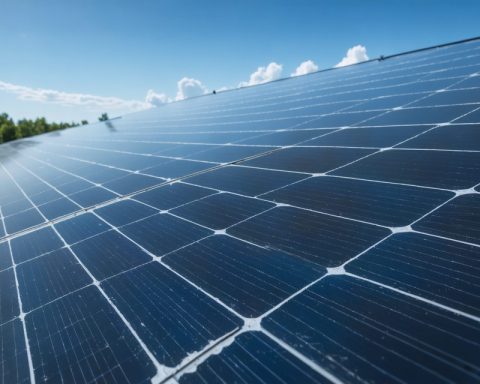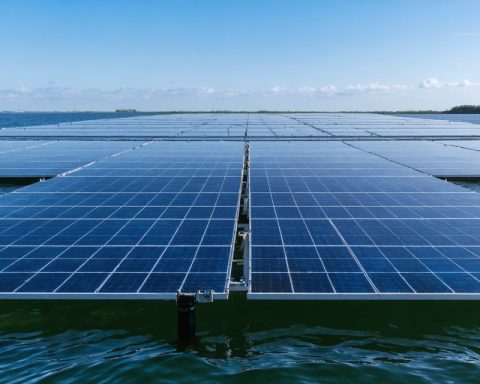- Ocean energy technology is rapidly evolving, transforming the traditional view of the ocean into a source of sustainable power.
- Innovative devices like wave energy converters harness the kinetic energy of ocean swells to generate clean, renewable electricity with minimal environmental impact.
- Wave energy converters include designs such as oscillating water columns and point absorbers, each taking advantage of ocean movement in unique ways.
- Coastal areas, such as Scotland, leverage this technology to enhance energy independence and sustainability, notably through projects like the MeyGen tidal array.
- While promising, these advancements necessitate ecological sensitivity to protect marine ecosystems, ensuring responsible development.
- The broader shift toward ocean energy symbolizes a commitment to embracing clean resources, aligning our future energy landscape with environmental stewardship.
The ocean, vast and mysterious, isn’t just a canvas for stunning sunsets; it’s quickly becoming the cradle of our sustainable future. Imagine harnessing the serene ebb and flow of waves to power entire cities. This once-dreamlike vision is now a burgeoning reality, thanks to breakthroughs in ocean energy technology.
Bold innovation meets the raw power of nature as engineers unveil cutting-edge devices designed to capture energy from the sea. These innovations, nestled beneath ocean swells, are akin to unseen forces tirelessly toiling to produce clean, renewable energy. Picture futuristic buoyant structures – machines artfully riding waves, using kinetic energy to produce electric currents that feed the hungry grid onshore.
Wave energy converters, the workhorses of this emerging technology, come in various forms. From oscillating water columns that breathe like oceanic lungs to point absorbers that bob like corks, each design taps into the infinite dance of water and wind. Their silent yet potent operation embodies innovation with minimal environmental impact – no emissions, no noise, just pure energy.
Coastal regions stand poised on the brink of an energy revolution. Take Scotland, for instance. Already a leader in renewable wind energy, it now turns to its choppy coastlines to bolster energy independence. Projects like the MeyGen tidal array exemplify the potential of harnessing tidal streams, demonstrating resilient and sustainable energy production.
Such advancements bring immense promise, yet require careful ecological consideration. The potential impact on marine life must remain a priority, ensuring that our quest for energy doesn’t disturb the delicate balance of ocean ecosystems. Researchers and developers work tirelessly to design systems that coexist harmoniously with the creatures of the sea, embedding sensors and using eco-friendly materials to reduce any negative footprint.
The dawn of this oceanic power surge isn’t just about technology; it’s about a mindset shift. We must embrace and invest in this burgeoning frontier, understanding that our decisions today shape the landscapes – and seascapes – of tomorrow.
The takeaway? Ocean energy holds the key to a world powered by clean, inexhaustible resources. As waves tirelessly lap against the shore, they whisper a promise: a greener, more sustainable future is within our reach, powered by the ceaseless rhythm of the sea.
Ride the Wave: How Ocean Energy Can Transform Our Future
Exploring Ocean Energy: A Sustainable Frontier
The conversion of ocean energy into usable power is pivotal for achieving global sustainability goals. Ocean energy technologies, such as wave and tidal energy converters, offer promising alternatives in diversifying our renewable energy sources. Key devices like oscillating water columns and point absorbers harness the power of ocean movements, representing significant strides in the quest for clean energy.
How Ocean Energy Works: Devices and Innovations
1. Wave Energy Converters: These devices capture and convert the energy from surface waves into electricity. They include various designs, such as:
– Point Absorbers: These float atop the waves, using the vertical motion to drive an internal generator.
– Oscillating Water Columns: These structures exploit the motion of waves to move air through a turbine, generating power.
2. Tidal Energy Devices: These technologies focus on the kinetic energy from tidal currents:
– Underwater Turbines: Similar to wind turbines, these are placed underwater where the tide flows, rotating as the current moves.
– Tidal Barrages: Dams across tidal estuaries use the rise and fall of the tide to generate electricity.
Industry Trends and Future Prospects
The ocean energy industry is projected to grow significantly, driven by technological advances and increasing investment in renewable energy. Market forecasts suggest substantial growth in installation capacities by 2030, particularly in regions like the UK and parts of Europe. Scotland is already spearheading numerous projects, further cementing its leadership in renewable energy implementation.
Environmental Considerations and Sustainability
The development of ocean energy must be mindful of marine ecosystems. Possible impacts on marine life include habitat alteration and noise effects. Thus, developers are integrating eco-friendly materials and deploying sensors to monitor environmental effects, ensuring systems coexist with marine biodiversity.
Pros and Cons Overview
– Pros:
– Infinite and renewable energy source
– Minimal noise and emissions
– Potentially high energy output in coastal regions
– Cons:
– High initial investment and maintenance costs
– Potential ecological disturbances
– Current technological limitations regarding efficiency and scalability
Actionable Recommendations: Getting Involved with Ocean Energy
1. Stay Informed: Regularly check updates on ocean energy projects and policies through legitimate sources.
2. Advocate for Renewable Energy: Support policies and initiatives focused on advancing ocean energy technologies.
3. Consider Investment: Explore opportunities to invest in companies and projects focused on developing ocean energy solutions.
For more information on renewable energy advances, visit U.S. Energy Information Administration.
By embracing advancements in ocean energy, we can collectively steer towards a more sustainable and environmentally-friendly future, leveraging the timeless rhythms of the sea for generations to come.


















